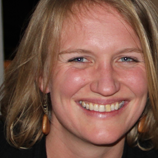
It’s that time of year when many of us reflect on the fun we’ve had, the tears we’ve shed, who we’ve loved, beautiful moments we’ve shared, what we’ve learned, and the journey we’ve covered.
We begin to orient around how the year ahead will be meaningful to us, keeping us on path, satisfying for our mind, body, spirit, and soul.
I have been putting together visions and goals for the past 10 years, and my process has evolved and adapted, with influence from beautiful people, professionals, and psychological theories. So it felt time to share what I’ve learned and what works best for me.
Above all the most insightful, helpful, and truthful way to decide what I want to focus on—give my energy and attention to—is by asking my body. Taking time to settle into my cells, let my nervous system rest, my breath become natural, connect with my belly, heart, brow centre, and see what comes: images, stories, and memories. It is from here that our deepest, truest longings and wishes can show themselves to us.
Here are seven things that have worked for me in setting meaningful goals that actually work:
1. A positive frame, set hopes rather than resolutions.
Several years back a dear friend and colleague shared that she doesn’t set New Year’s resolutions, she sets New Year’s hopes. I thought that was pretty revolutionary and wanted to try it. Switching from a resolve, which was often something not to do, to a hope, felt like it had less attachment or potential self-inflicted criticism and dismay when my resolve lost its strength and discipline.
Setting hopes brought some freshness and air to planning the year, a lightness and a sense of shared responsibility. Hopes were not only up to me, they were also up to anyone related to my hope, and what emerged with time. That worked for me. New Year’s hopes form the base of how I approach my vision and goals for the year ahead. The process seems to have got more and more creative and elaborate each year.
2. Take time to listen to the wisdom of your body.
It is important to start any prioritising or goal setting process with some still time, connecting to the wisdom of the body, and quietening the mind. I ask my heart, my belly, my cells, “What is most important for me? What is my spirit called to next year? What is my aliveness longing for?” You could do this out in nature—under the trees, by a river, or pond, or you could lie on the floor by a fire, meditate…whatever works for you! Do it for 15-30 minutes.
This process often reveals something unexpected. Once I got, “Dance as much as you can,” and, “Go and spend solo time in the Central American forest.” I did the process again a couple of days ago, to begin to orient myself toward 2018. I got images of community, circles of companions, and a beloved life partner walking with me in the healing green of nature. I had actually thought I was done with romance for a while and needed a year’s break. But, the deepest truest hope inside said, “Yes, this is what you want, in your own way, own style, but nonetheless, in a lifelong partnership with someone.”
3. Enjoy the process, get creative, do it in partnership.
A dear friend inspired me to do a vision board. We would set aside a day together in the first few weeks of January, gather our collective art supplies, turn off our mobile phones, drink herbal tea, and listen to beautiful music. Time would disappear—chatting, cutting, sticking, painting, drawing, writing.
4. Remind yourself every day in any way.
Sometimes I need another evening to finish my vision board, and then I stick it up on a wall that I see every day, take a photo, and make it the screen saver on my computer. And this is the key piece: Keep your vision and goals present in your mind as often as possible. Other good places to put your vision board are on the fridge, in the notes of your cell phone, or next to the mirror in your bedroom or bathroom. If you are someone, like me, who finds meaning and discipline through ritual, then adding in five minutes to your morning to review your hopes, vision, and goals is a great way to keep on track.
5. Right-size your hopes and goals.
There is a huge benefit to breaking down your hopes and goals into actionable chunks, with specific time targets, and a level of specificity to describe how you promise to be satisfied when reaching them. I learned this with the Strozzi Institute while doing my coaching certificate. The key is making sure you can realistically reach a level of satisfaction on your way toward your vision and hopes.
So, for example, one of my hopes that body strongly reminded me of, is to be in relationship with my life partner, and that involves finding him, testing the waters, growing in love together, and making the decision to stick with each other long-term. My goal in the next 12 months for this hope is to meet someone I can grow in love with.
I promise to be satisfied in 2018 if I take it slow and we spend time together nine times before getting intimate, if he likes to spend time doing his own thing, and has a healthy emotional and physical relationship with himself.
My actionable chunks are to prepare myself to keep my life going—even while sharing it with him. By June 2018, participate in a mixed gender group activity authentically enjoyable for me—once per week, practice clear dignifying declines so I can say no when I want to—once per week, tell my good friends, and family that I am ready and available—by March 2018.
With this, I have milestones along the year to work toward, and I have thought about what I specifically need to do to make this happen. We are each unique, like our fingerprints, and the edges we need to push, or changes we need to make to reach our goals and hopes will be unique, too.
6. Ask a friend to keep you on track.
And then the next steps are to share your vision board, hopes, and goals with your partner, mother, sister—whomever you trust, and can ask to support you. This is essential to keep you on track. We are often better at sticking to our commitments when we are accountable to someone else—this is partly why we pay for personal trainers, join a running club, or write books collaboratively. Ask your trusted friend to check in with you regularly—once a month perhaps—on how you are doing. You can even set up calls in the diary in advance to do this. I have done this with different friends for different commitments I have been working, scheduled monthly as “listening partner calls.”
Alongside this kind of support, you can also start to train your attention to focus on what you are grateful for, what inspires you to stick with your hopes and goals, what brings you joy and aliveness.
7. Write down your moments of wonderful aliveness.
One year a friend shared an idea to keep a jar of gratitude. This is a fabulous practice. I went out to buy a special blue vintage glass jar and used the back of old business cards that I collected from people throughout the year. I would write special moments I had experienced on each piece. I did this every so often, when I remembered, and so would write five to ten of them at a time.
At the end of the year, the day before or the morning of my vision boarding, I emptied the jar on the dining room table, and read through them all. Well, that put a “the cat that got the cream” smile on my face for the rest of the day—a real mood-lifter. I saw a clear pattern in what was creating joy in my life. I wrote these down to help guide my choices in the future, and my goals for the year ahead. They were intimate conversations, dancing, learning, time in nature, good sex, and healthy yummy food—when I get what my sister calls the food wiggles.
Knowing the importance of these kind of experiences in my life is a great way of setting the compass when I have to make hard choices or feel a bit lost. If you travel a lot you can use a little notebook instead of the glass jar at home. I’ve been doing that lately—it suits my nomadic lifestyle better.
And you can do this anytime of the year, whenever you feel the need. Going on a form of retreat can be a great way to give yourself the time, space, and support to vision.
Author: Lise Melvin
Image: Angelina Litvin/Unsplash
Editor: Sara Kärpänen
Copy editor: Catherine Monkman
Social editor: Lindsey Block






Read 0 comments and reply